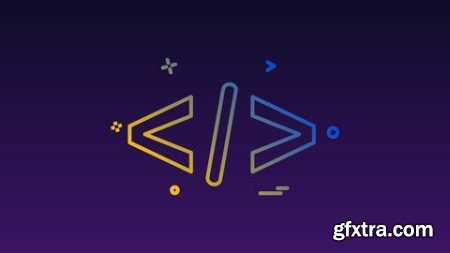
Last updated 10/2018MP4 | Video: h264, 1280x720 | Audio: AAC, 44.1 KHzLanguage: English | Size: 1.73 GB | Duration: 3h 49m
Dive deep into computer vision concepts for image processing with Python 3
What you'll learn
Work with open source libraries such Pillow, Scikit-image, and OpenCV
Perform basic to advanced image and video stream processing with OpenCV Python APIs
Write programs for edge detection, color processing, image feature extraction, and more
Implement feature detection algorithms such as LBP and ORB
Understand convolutional neural networks to learn patterns in images
Work with human faces and perform identification and orientation estimation
Discover deep learning methods that can be applied to a wide variety of problems in computer vision
Requirements
Basic knowledge of Python is expected.
Description
Python comes with many freely available powerful modules for handling images, mathematical computing, and data mining which makes it an ideal language for rapidly prototyping and developing production-grade codes for image processing and computer vision. If you wish to build computer vision applications that are smarter, faster, more complex, and more practical with Python 3, then you should surely go for this Learning Path. This comprehensive 2-in-1 course aims to equip you to build Computer Vision applications that are capable of working in real-world scenarios effectively. Some of the applications that you will learn in this course are Optical Character Recognition, Object Tracking and building a Computer Vision as a Service platform that works over the internet. You will also learn state-of-the-art techniques to classify images, and to find and identify humans within videos. This learning path will give you a versatile range of computer vision techniques with Python 3, which you will put to work in building your own computer vision applications. This training program includes 2 complete courses, carefully chosen to give you the most comprehensive training possible. The first course, Python 3.x for Computer Vision, starts off with an introduction to image processing. You will then learn features and filters in computer vision. You will also implement feature detection algorithms such as LBP and ORB. Finally, you will understand convolutional neural networks to learn patterns in images. Throughout this course, three image processing libraries: Pillow, Scikit-Image, and OpenCV are used to implement different computer vision algorithms. The second course, Computer Vision Projects with Python 3, starts off by showing you how to set up Anaconda Python for the major OSes with cutting-edge third-party libraries for computer vision. You will then learn state-of-the-art techniques to classify images and find and identify humans within videos. Next, you will learn to augment Python with the powerful vision and machine learning tools such as OpenCV and TensorFlow. Finally, you will learn to detect facial features and develop a general image classifier.By the end of this Learning Path, you will be able to build computer vision applications that are capable of working in real-world scenarios effectively.About the Authors : Saurabh Kapur is a computer science student at Indraprastha Institute of Information Technology, Delhi. His interests are in computer vision, numerical analysis, and algorithm design. He often spends -solving competitive programming questions. Saurabh also enjoys working on IoT applications and tinkering with hardware. He likes to spend his free playing or watching cricket.Matthew Rever is an image processing and computer vision eeer at a major national laboratory. He has years of experience automating the analysis of complex scientific data, as well as the control of sophisticated instruments. He has applied computer vision technology to save a great many hours of valuable human labor. He is also enthusiastic about making the latest developments in computer vision accessible to developers of all backgrounds.
Overview
Section 1: Python 3.x for Computer Vision
Lecture 1 The Course Overview
Lecture 2 Image Processing and Its Applications
Lecture 3 Image Processing Libraries - Pillow
Lecture 4 Geometrical Transformation - Pillow
Lecture 5 Introduction to scikit-image
Lecture 6 Image Derivatives
Lecture 7 Understanding Image Filters
Lecture 8 Custom Filters and Image Thresholding
Lecture 9 Edge Detection
Lecture 10 Harris Corner Detection
Lecture 11 Local Binary Patterns
Lecture 12 Oriented FAST and Rotated BRIEF (ORB)
Lecture 13 Image Stitching
Lecture 14 Contour Detection and the Watershed Algorithm
Lecture 15 Superpixels and Normalized Graph Cut
Lecture 16 Introduction to Machine Learning
Lecture 17 Logistic Regression
Lecture 18 Support Vector Machines
Lecture 19 K-means Clustering
Lecture 20 Introduction to Neural Network
Lecture 21 MNIST Digit Classification Using Neural Networks
Lecture 22 Convolutional Neural Networks
Section 2: Computer Vision Projects with Python 3
Lecture 23 The Course Overview
Lecture 24 ing and Installing Python 3/Anaconda
Lecture 25 Installing Additional Libraries
Lecture 26 Exploring the Jupyter Notebook
Lecture 27 Acquiring and Processing MNIST Digit Data
Lecture 28 Creating and Training a Support Vector Machine
Lecture 29 Applying the Support Vector Machine to New Data
Lecture 30 Introducing TensorFlow with Digit Classification
Lecture 31 Evaluating the Results
Lecture 32 Introducing dlib
Lecture 33 What Are Facial Landmarks?
Lecture 34 Example One – Finding 68 Facial Landmarks in Images
Lecture 35 Example Two – Faces in Videos
Lecture 36 Example Three – Facial Recognition
Lecture 37 A Deeper Introduction to TensorFlow
Lecture 38 Using a Pre-Trained Model (Inception) for Image Classification
Lecture 39 Retraining with Our Own Images
Lecture 40 Speeding Up Computations with GPUs
This learning path is for developers who want to explore the field of computer vision to design and develop computer vision applications with Python.
HomePage:
Top Rated News
- Sean Archer
- John Gress Photography
- Motion Science
- AwTeaches
- Learn Squared
- PhotoWhoa
- Houdini-Course
- Photigy
- August Dering Photography
- StudioGuti
- Creatoom
- Creature Art Teacher
- Creator Foundry
- Patreon Collections
- Udemy - Turkce
- BigFilms
- Jerry Ghionis
- ACIDBITE
- BigMediumSmall
- Boom Library
- Globe Plants
- Unleashed Education
- The School of Photography
- Visual Education
- LeartesStudios - Cosmos
- Fxphd
- All Veer Fancy Collection!
- All OJO Images
- All ZZVe Vectors




 Categories
Categories







